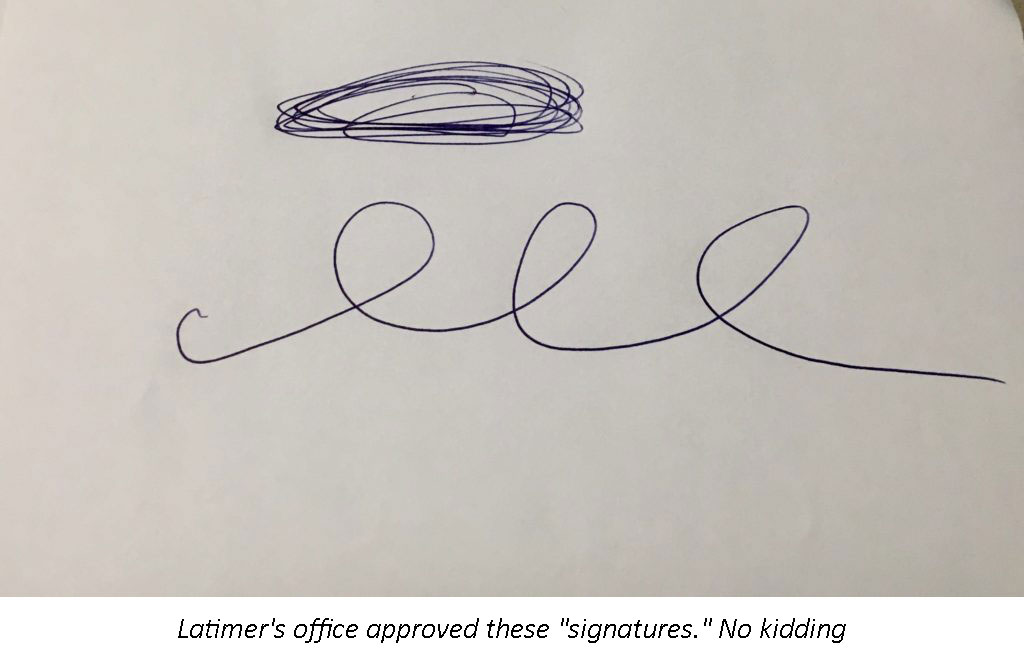
Despite assurances from Hillsborough County Supervisor of Elections Craig Latimer, there are literally hundreds of skeptics who believe an honest vote count faces stiff odds Tuesday.
Most of the mistrust emanates from opponents of the special-interest driven transit sales tax increase. Anti-taxers are certain that the referendum, bankrolled by Tampa developer Jeff Vinik, will fail with a legitimate count.
There are questions about the manufacturer of the voting machines used in Hillsborough, Latimers’ motivations and track record, and Vinik’s influential reach into public officials, government agencies, media entities, and anyone with the expertise in skewing voting results.
Speaking to the concern that Hillsborough County results won’t reflect a true vote count, Latimer essentially asks the public to “trust me.” In an interview with Tampa Bay Beat, he said that Hillsborough uses ES&S voting machines that have had many documented problems.
”We have the latest version, not the older ones with the problems you read about on the Internet,” Latimer said. “About three-quarters of Florida counties use ES&S.”
Ion Sancho, widely considered the dean of Florida’s Supervisors of Elections and recognized nationally for his knowledge of elections security, has a different view. He served as Leon County SOE for seven terms before retiring in 2016.
He prefers Dominion brand voter machines, which are more reliable and less likely to be hacked. Sancho expressed “no confidence” in ES&S machines, the ones in Hillsborough.
”But I think there will be less of a problem as long as individual counties are in charge of the results, rather than the state,” Sancho opined. “An inaccurate result is entirely possible if there was a corrupt operation. I’m not aware of any.”
But Latimer reassures no one closely following the poorly conceived transit proposal. He approved the vague ballot language on the referendum, which obfuscates the fact that it is a sales tax increase. He also approved the signatures that propelled the tax onto the ballot, including ones illustrated below:

Articles in the national press indicate some real, documented problems in voting procedures. In a February 2018 article in The New York Times, Kim Zetter reported that remote-access software had been found on an election management computer system used in Pennsylvania, and quoted unnamed sources saying "ES&S has in the past sometimes sold its election-management system with remote-access software preinstalled," and that this was used by ES&S technicians to remotely access the systems via modem to troubleshoot and provide maintenance to systems they sold.
She also included a response from the company denying this, stating, “None of the employees ... including long-tenured employees ... has any knowledge that our voting systems have ever been sold with remote-access software.“
In a letter sent to U.S. Sen. Ron Wyden, D-Ore., in April 2018, Election Systems & Software made the disclosure that in fact “some” of the elections management systems they sold for voting did have remote-access software installed. This disclosure was made public in July 2018. The letter to Wyden had been in response to a question from the senator requesting clarification of the information on remote-access software in the New York Times article.
While elections-management systems are not the voting machines voters use to cast their ballots, they are used to program the voting machines used in a county and to count and tabulate the results from the voting machines. By installing remote access software allowing the machines to be accessed via the Internet, the machines are vulnerable to being “hacked” remotely, allowing the counting to be altered surreptitiously, or malware to be installed to affect an election result.
Motherboard, the site that originally published the story, called the remote access software installation “the worst decision for security short of leaving ballot boxes on a Moscow street corner.”
ES&S claims to have stopped installing the remote-access software in December 2007, in response to standards adopted by the U.S. Election Assistance Commission.
In a just-published article, the New Yorker called into question the accuracy of any vote count. Writer Sue Halpern penned:
”When reports began circulating last week that voting machines in Texas were flipping ballots cast for Beto O’Rourke over to Ted Cruz, and machines in Georgia were changing votes for the Democratic gubernatorial candidate Stacey Abrams to those for her Republican opponent, Brian Kemp, it would not have been unreasonable to suppose that those machines had been hacked.”
She went on to say, “it is impossible to verify that the votes cast were not the votes intended, since the AccuVote does not provide a physical record of the transaction.”
After the rancorous 2000 presidential election, a bipartisan Congress, passed the Help America Vote Act. It created the Election Assistance Commission, which it then deputized to test and certify voting machines. The act also allocated millions of dollars for election-infrastructure upgrades, much of which was used to replace traditional voting machines with computerized machines, like eSlate and the AccuVoteTS. Georgia, in fact, was the first state to adopt D.R.E. touch screens statewide.
“Those machines are still in service, despite their well-documented problems” Halpern reported.
Jim Bleyer, a former reporter at the Orlando Sentinel and Tampa Tribune, writes the Tampa Bay Beat blog.


